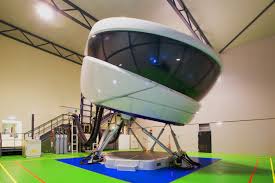L3Harris will lead a team to help transform the U.S. Air Force’s flight simulator training used to help develop highly skilled aircrews.
The team includes L3Harris, CAE USA, CymSTAR, Dell Technologies, and Leidos
- The team will lay the groundwork for updated training infrastructure
- New standards will lead to enhanced cybersecurity and enable remote software updates
- L3Harris Technologies will lead a team to help transform the U.S. Air Force’s flight simulator training used to help develop highly skilled aircrews.
The L3Harris team – including CAE USA, CymSTAR, Dell Technologies, and Leidos – will support the Air Force’s Simulators Common Architecture Requirements and Standards (SCARS) program, which will integrate and standardize the service’s aircraft training simulators.
The team will help the Air Force develop a set of common standards for simulator design and operation. Simulators are built by multiple providers using unique interfaces, which makes training updates difficult. SCARS’ stricter cybersecurity criteria will enable the Air Force to link simulators together, perform remote software updates, and enrich the training environment.
There are approximately 2,400 simulators across 300 locations that will be updated with the new common architecture over the next few years. The initial task order covers nine sites and integrates new standards into the A-10 and KC-135 platforms.
“The future of Air Force training is here. The L3Harris team will transform the simulator infrastructure and provide the Air Force with increased cybersecurity and a common operating environment,” said Todd Gautier, President, Aviation Systems, L3Harris. “The integrated solution will allow the Air Force to grow into multiple platforms and provide crews with a more realistic training environment.”
“As we move to multi-domain operations there’s an increased focus on commonality and interoperability for all Department of Defense training efforts,” said Lt. Col. Rick Jaime, Materiel Leader, Operational Training Infrastructure at the U.S. Air Force, “We look forward to working collaboratively with our prime and partners to create a unique approach to synthetic training environments. These are capabilities that will integrate into broader training systems in the future.”

